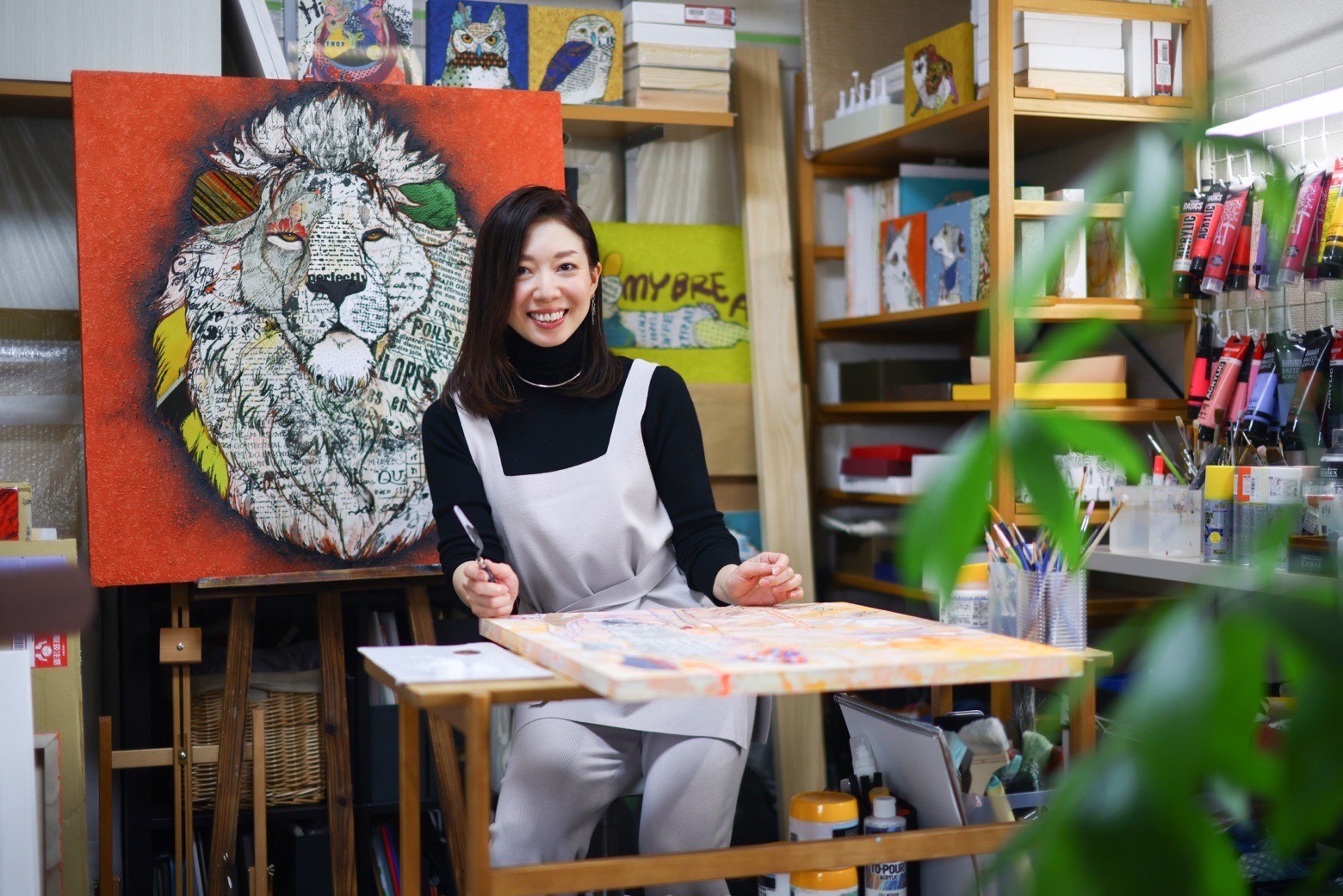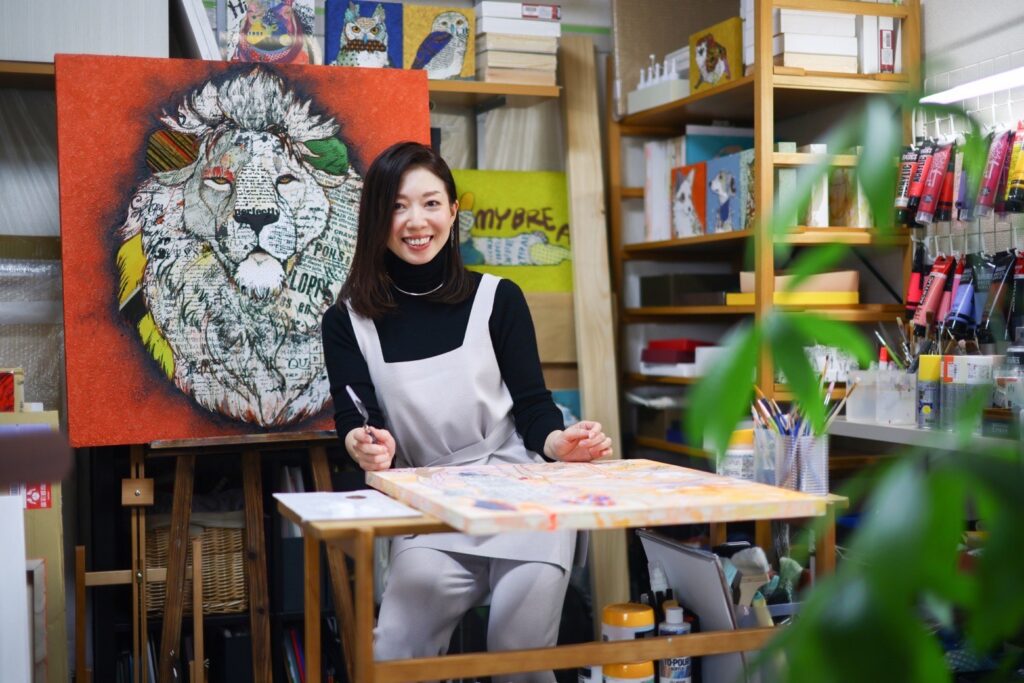
In conversation with Yoshimi Kanou, we talk about her life as an artist. Please enjoy reading this interview by Imoko Ichinose!
Interview with artist Yoshimi Kanou. Your strength and vulnerability are what makes you beautiful!
I grew up surrounded by animals, the ocean on one side and the mountains on the other side.
Your works are noted for the patchwork animal features (the cut-and-paste expressions of various cloth and art materials). In this interview, I would like to dig deeper to find out a little more about your creativity and work style. Have you always been an animal person?
I was born in Matsue City in Shimane prefecture. I grew up in a rural area with more animals than people. Facing the ocean with the mountains to my back, I was surrounded by animals and nature.

What kinds of animals were there?
I’ve had two dogs, one cat, and two hamsters as pets. I’ve also kept many insects and reptiles; keeping animals is in my nature. I spent time with them in the same way that I play with my human friends.
I used to pick up frogs and bring them home, even though they were everywhere. I would find abandoned, wandering animal babies and sneak them home. When my parents found out, they would scold me, but I would cry until they allowed me to keep them.
Were you already into drawing at that age?
Ever since I was a small child, I would draw all the time if I had a pen and paper nearby. The rest of the time, I think I was just sitting around, not doing much. People often told me they couldn’t know what I was thinking.
My parents were very opinionated and fought often. When the fights started, I would run away to the doghouse and spend time there with the dogs.
Why run away to the doghouse and not to another room?
The dogs didn’t mind my parents fighting, which helped me imagine that the fight was no big deal. I don’t know whether that was healing, or if it gave me courage. Either way, I was always with the animals.
In our household, I was the pet walker. When I took them out for a walk, I would often run into my elementary school teacher on their way home. The teacher would comment that I always had a big smile on my face. I hadn’t realized I was smiling, but it was probably the effect my dogs had on me. Having them close by helped put a smile on my face. We just had fun being together.
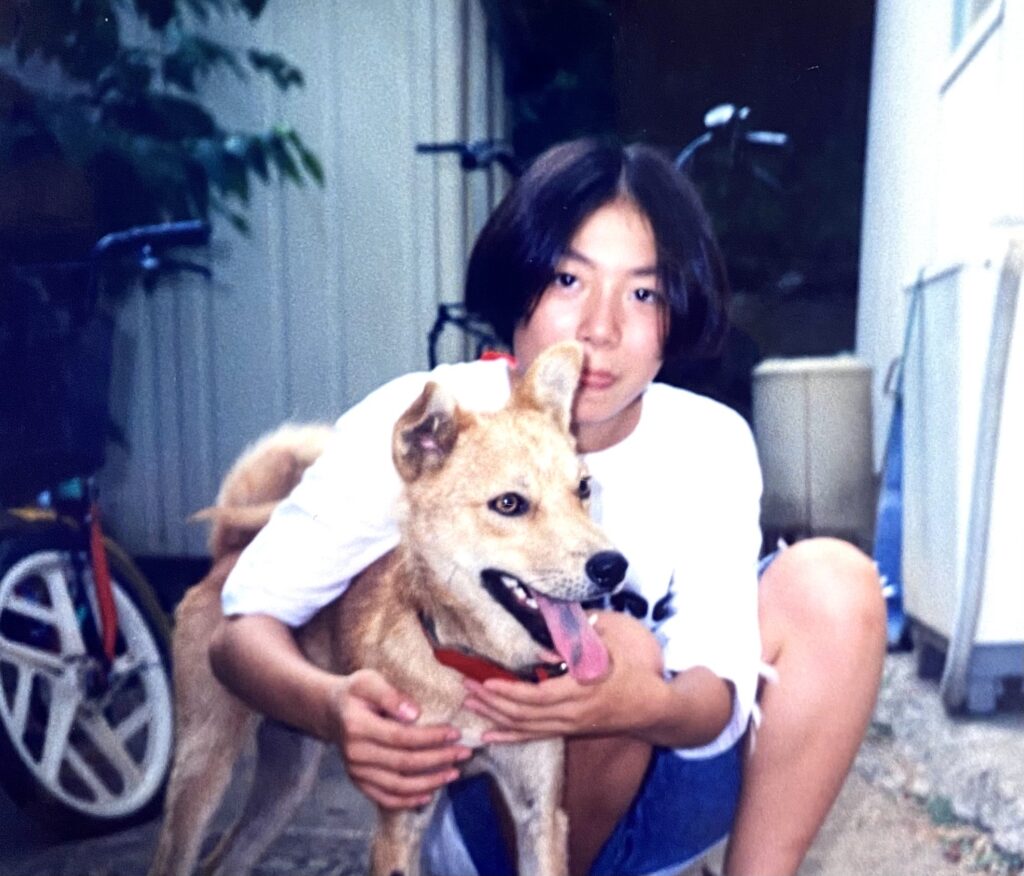
Do you have any fond memories of your pets?
I’ve learned a lot from the animals.
When I had a cat and a hamster at the same time, I once put the hamster alone in a box to clean the hamster cage. The moment I opened the cage lid to put the hamster back, my cat snatched him up with his teeth and ran towards the mountain. I didn’t notice my cat sitting right next to me. I went outside and kept calling her name “Meowko!” over and over, but it didn’t come back.
I’d heard of cats eating mice, but when that happened between my hamster and my cat, my mind went blank. That was my first-hand experience of what it means to be a living creature within the food chain.
Cats are solitary animals, and their instinct is to go into hiding in their last hours. We only realize when they’re gone. Humans don’t have the means to control their life. Even the smallest animals taught me many things as a young child.
While in school, I aspired to become an illustrator.
When did you decide to follow your path as an artist?
As a young child, I loved comic books and was convinced I would become a cartoonist. At that time, I was too young to know about paintings or art, hence the goal to become a cartoonist. When I decided to try my hand at drawing a cartoon, I realized I had no talent for writing stories. I still loved to draw, so my next goal was to become an illustrator.
To become an illustrator, I started studying a wide range of things in middle school. I did studies from manga, anime, movies, etc., which helped me learn about coloring and shaping. I showed my drawings to my homeroom teacher, who also happened to be an art teacher. She always gave me compliments and encouraged me, so I worked even harder at it.
In high school, I joined the art club and started oil painting. I continued to hold onto my dream of becoming an illustrator.
Did you study illustration professionally later on?
I worried that becoming a freelance illustrator would be very difficult, and I was often torn between pursuing a more realistic career path or my dream of becoming an artist. After much deliberation and talking to my teachers, I chose to become a civil servant and passed the civil service exam after dedicating a year to studying.
After spending an entire year not painting at all while studying, I was mentally drained and depressed. This extended period of time where I wasn’t painting was a first for me. I was happy to have passed the exam, but spending a year living a life different from the one I’d envisioned made me realize how difficult it was. I knew that I wanted to paint, and decided to turn down a government job to pursue a career as an illustrator.
That’s when you knew.
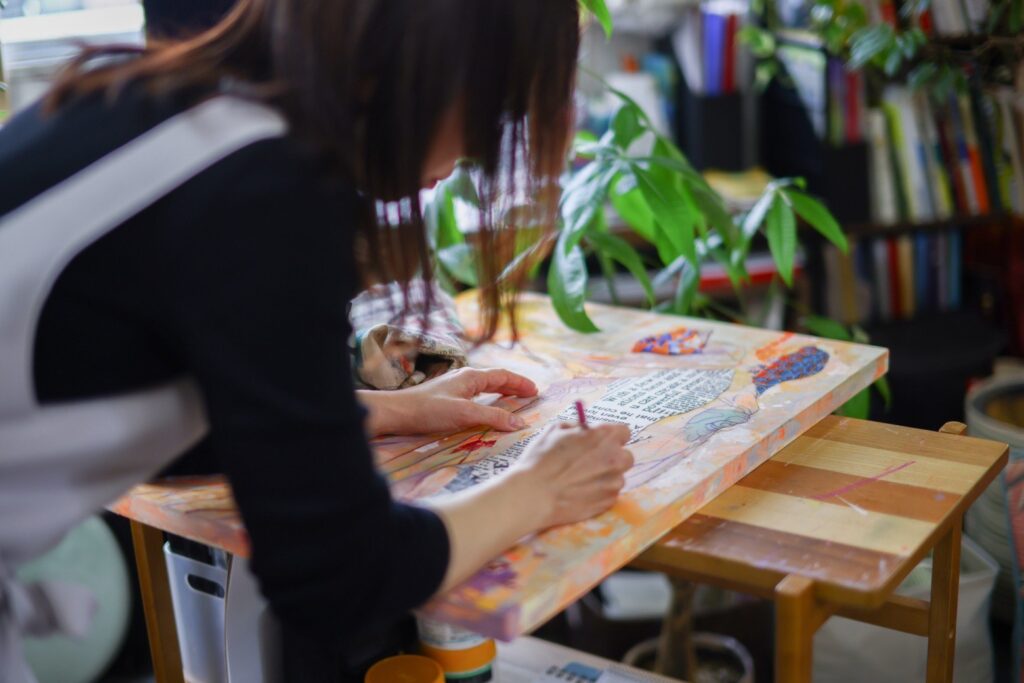
Nevertheless, the art world is tough. Unsurprisingly, my parents were against me studying painting to become an illustrator. Once they saw how serious I was, they allowed me to study painting on the condition that I would work part-time to pay for it myself.
When I was trying to decide on a school, I looked at all the school brochures and told my high school art teacher that I wanted to go to a technical school to study illustration. My teacher recommended that I go study at a four-year university instead so that I could develop a solid foundation. They said that even though illustration is a two-dimensional area of study, studying sculpture to build a foundational skill and knowledge would last me a long time and help me out in the long run.
For someone looking to focus in the illustration domain, studying sculpture seems to be an unexpected choice.
That’s true. My teacher surprised me by offering to accompany me to meet a sculptor he knew, and he asked him to give me a part-time job while I learned the ropes. I spent a year with him making clay sculptures and asking the sculptor to look at my drawings while working part-time. After a year, I was accepted to a university in Hiroshima that I’d been hoping to get into.

In college, I worked in wood, stone, used plaster, and kneaded clay. I basically learned to use my whole body to create art. It was a completely different experience from doing illustrations. This kind of exposure to a variety of materials and methods became a huge source of inspiration for me and has served me well in my long career as an artist.
How did you get your start as a freelance illustrator?
When I was a sophomore in college, a teacher asked me if I’d be interested in painting the backdrop for a performing arts show for a director friend of theirs. I immediately replied that I’d love to help out, and that’s how I started. The project was creating a stage for an audience of children, incorporating pictures and music to go with children’s stories. The show would be put on several times a year. The stage was well received, and it was a great opportunity to be a part of the creative group. This helped to kickstart my career in illustration. After graduating from the university, I spent over 10 years in Hiroshima.
I want to have confidence in myself and be strong and yet vulnerable, just like in the painting.
What was the catalyst for you to become a painter?
Illustrators are generally chosen for their distinctive style. I, on the other hand, could change my style according to each theme. For example, for one particular story, I would use a cutout-like style, and for another story, I might use a crumbly crayon-like style. After seven or eight years in Hiroshima, I began to notice works from certain illustrators by their distinct drawing styles. That’s when I started wondering how I was perceived in the illustration world. Until that point, I used to market myself as being able to draw according to a desired theme, but I began to wonder if that was what I wanted.
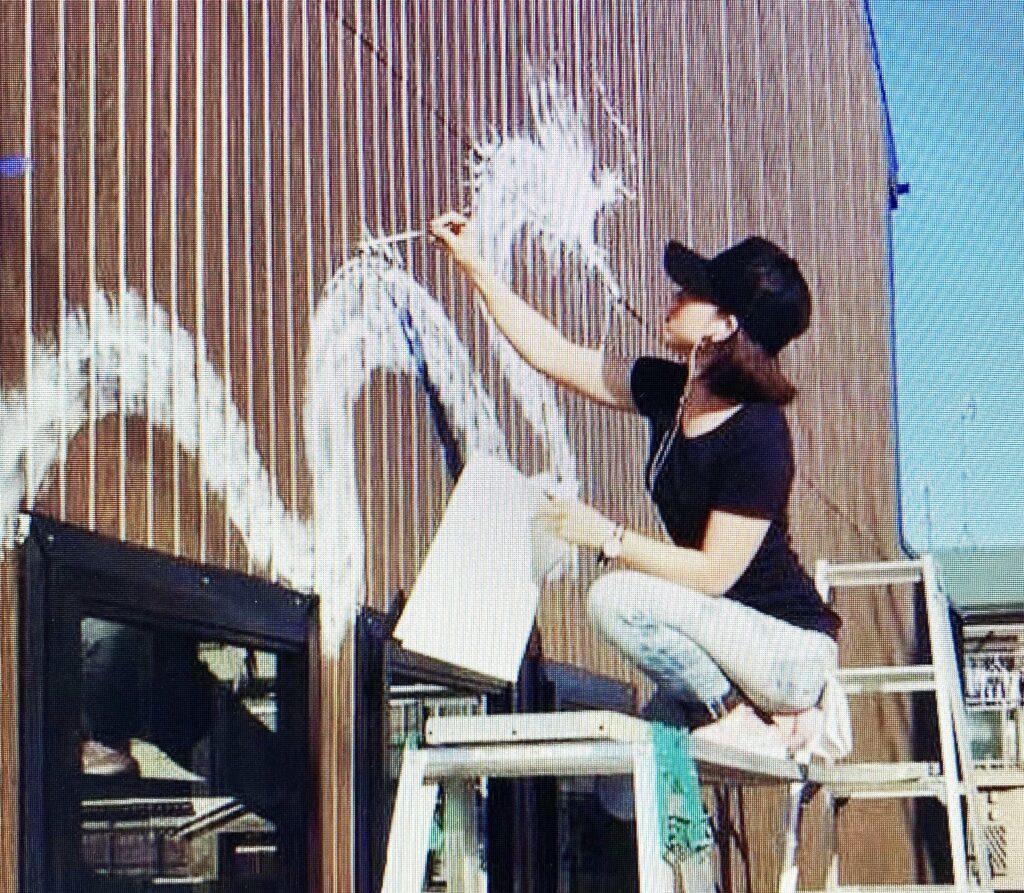
From then on, the more I painted, the more I became unsure of my individuality. I could say that I liked and was good at all styles of drawing, but I secretly harbored doubts and began to search for my answers.
After several years of continuing to work as an illustrator, I decided to relocate to Osaka, where I had many friends. I decided to change my environment, become a painter, and hold a solo exhibition. I wanted to start and launch my style.
What a drastic change that must’ve been for you. What kind of works have you been painting since then?
To be honest, I hadn’t established my style for the first two or so years after moving to Osaka. Even so, I tried to hold a solo exhibition once or twice a year. I wanted my customers to see where I was at, and I wanted to create works that only I could create.
That’s when the pandemic began, and it became impossible for me to hold private exhibitions since I had to stay indoors. I was completely stuck.
What helped you to break out of the rut?
One day, I saw a patchwork teddy bear in a window display of a store and had a flash of inspiration. Patchwork is made from fabrics with different patterns. I thought, “Why not combine all the different styles of paintings I’ve done in the past into one patchwork style?” Until then, I had been thinking that I had to narrow my style down to just one, but I felt that I could express my uniqueness by having a variety of styles.
And that’s how your patchwork style was born.
After going home, I tried painting a combination of all kinds of things at random. I cut and pasted clothes that I was going to throw away, shopping bags that I had at home, etc. Cut and paste, cut and paste, moving my hands. I even asked to have some carpets from a cleaning company that was going to throw them away.
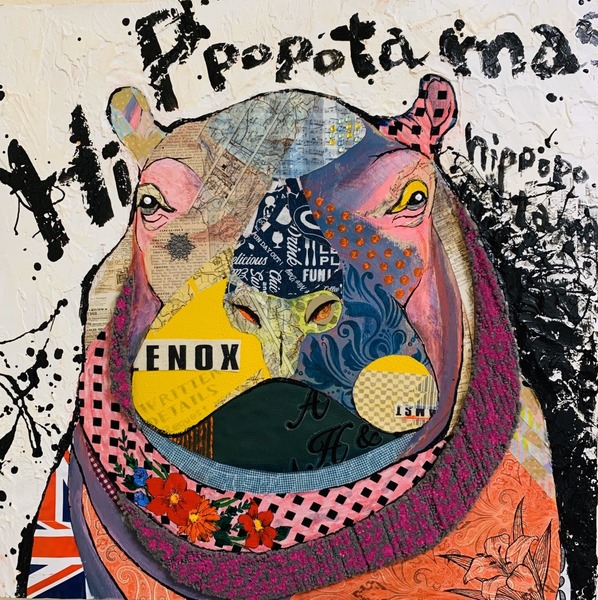
The first piece of patchwork art by Yoshimi Kanou.
I researched materials as well as various techniques so that I could combine them in the painting. For example, I used the differences in the properties of oil-based and water-based paints to my advantage to paint with, and I also drew with crayons on top of acrylic paints.
My first piece with this style was Hippopotamus.
I posted it on Instagram in 2019, and the response was overwhelmingly positive. I felt like that was when I finally got my start as a painter. I started collaborating with companies and selling my work at events. Now I can say that I make artwork that feels “uniquely me” and enjoyed by others. I feel as if I’ve finally found my answer to the question “How can I make a work of art that’s uniquely me?”.
Why do you think your patchwork animals are highly favored by so many?
I had a client who said to me, “I want to have confidence in myself; to be strong yet vulnerable, just like in the painting”.
In life, we all have various aspects of ourselves: the strong self, the weak self, the headstrong self, the honest self, etc. I feel that the colors and shapes of my patchwork project these different aspects onto the viewer, and the viewers themselves project the aspects of their personalities onto the colors and shapes of my patchwork creations. If any of these aspects were missing, they would not be who they are. When you look at a picture with various overlapping parts from a distance, you see a beautiful human being.
When I was still working as an illustrator, I was always the one making decisions. Sometimes, I was afraid to make decisions because of a lack of confidence, or the fear that I might fail. While I still have these negative aspects, I also have positive traits such as confidence and joy, which is the reason why I’ve been able to make it this far. This is why I want to use both murky and beautiful colors in my art. I want to create works that I think are incredibly beautiful when different colors and materials are combined.
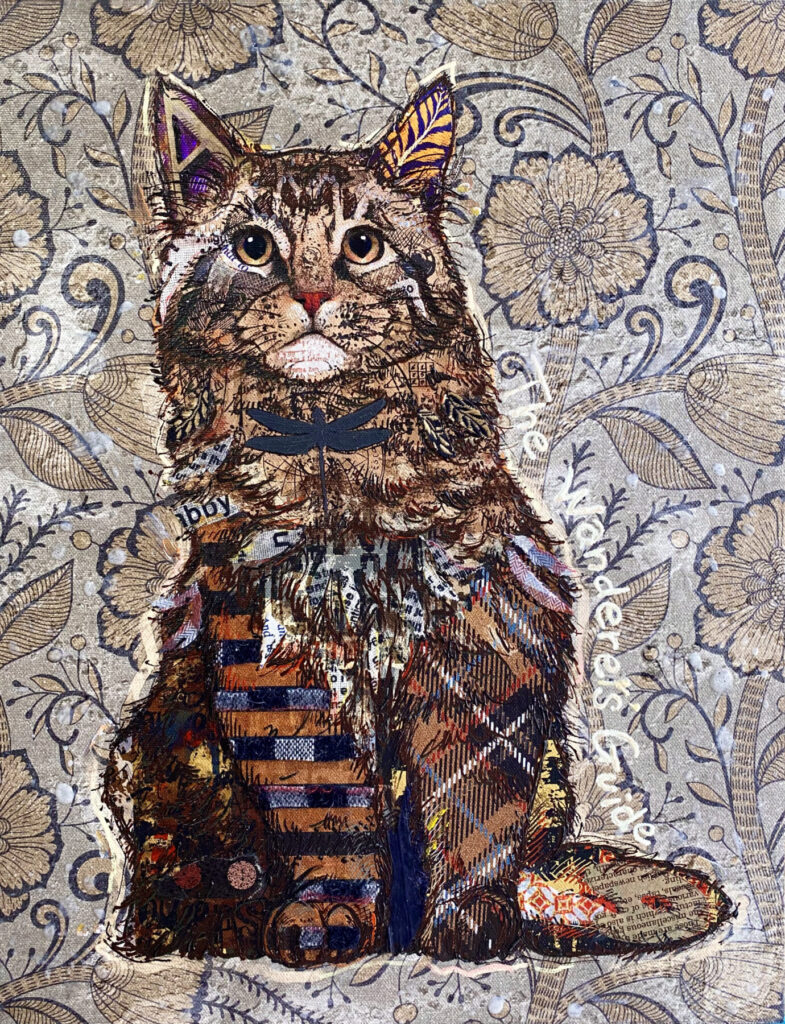
Animals have an inherent power, which helped me when I was a child. Just looking at a lion gives me confidence, as if I’ve become a part of its pride. When I pet a cat lounging around, I want to lie down and relax too. Animals have the power to help their surroundings, so when I draw an animal, that power transfers itself into the drawing as well.
Thank you for your time today.
(interviewed and written by Imoko Ichinose)
Yoshimi Kanou, artist bio
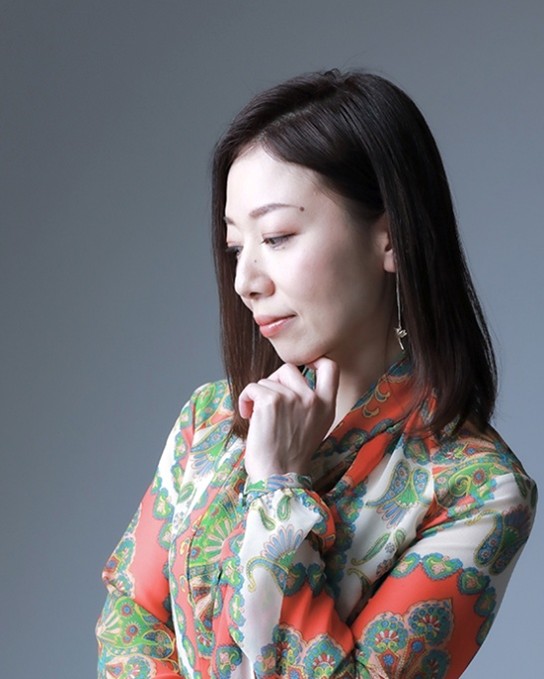
Yoshimi Kanou
Born in Tottori and raised in Shimane, Yoshimi Kanou grew up in an abundance of nature, with her home facing the ocean and the mountains at her back. This experience of growing up surrounded by nature has greatly influenced her style. Many of her works are based on animal subjects, and her background in sculpture is reflected in her art. Different materials such as cloth and paper are pasted on top of each other in a three-dimensional manner. In addition, many colors and patterns are painted as layers, serving to blend and complement the various materials, providing harmony.
Yoshimi Kanou began building her career as an illustrator in her school days, then turned to painting in 2016. Her brightly colored and expressive animal artwork attracts many loyal fans, and her Instagram has amassed over 6,000 followers. She has done exhibits for her work in collaboration with corporations but hopes to have more opportunities to showcase her work for gallery patrons to enjoy in the future.
2005 Graduated from Hiroshima City University, Faculty of Art, Department of Fine Arts, Sculpture
2016-18 Solo Exhibition, Osaka
2022 Debut of Art Newcomer Award, Honorable Mention, Gekkan Bijutsu
2023 Solo Exhibition, Tokyo
2025 Solo Exhibition, Hakata Hankyu Store
Description of Yoshimi Kanou’s Time for Battle

Yoshimi Kanou, Time for Battle, S25 size (80.3 x 80.3cm), Mixed Media
When we take on a new challenge, we must first face our weaknesses and fears. Humans have evolved to feel anxiety as a survival mechanism, even without immediate danger.
However, the lion’s piercing gaze cuts through our fears and reveals them as illusions of our own making, stripping our minds bare. When we accept our fragility and weakness in the presence of the lion’s powerful gaze, everything falls into place, which is when we realize our inherent strength. In the next moment, you feel as if the lion has projected itself onto you, and you’re now looking at yourself through a mirror. You feel the power surging within you to take a step forward into the future.
(Description by FFD)
Details of Yoshimi Kanou’s Exhibition
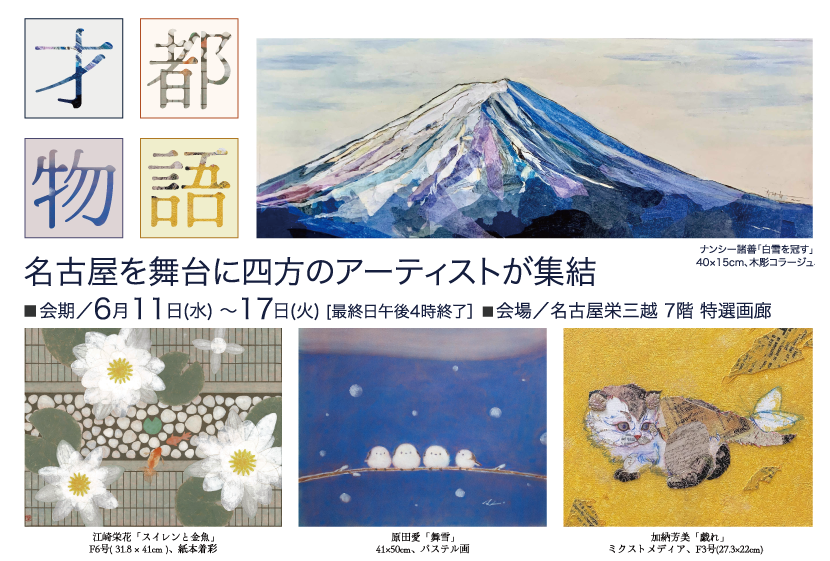
Saito Story
Artists from all four directions will gather in Nagoya
January 15th (Wed) – 21st (Tue), 2025
10:00 – 18:00 (Last day closes at 17:00)
Nagoya Sakae Mitsukoshi Store 7F Art Gallery (Free Admission)
The three heroes associated with Aichi once led Japan. Now, a new art story is being spun in Nagoya by a group of talented artists from Aichi and other parts of Japan. A Japanese-style painter, a wood-carving collage artist, a pastel painter, and an acrylic painter – please enjoy this fresh exhibition in which their individual personalities resonate with each other.
